A painting is made up of various layers, including paints, varnishes, and resin. Therefore, it is important for the conservation and in depth assessment of a piece to investigate what lies beneath the surface. A professional painting assessment using cross-section analysis allows our team to fully understand the complex needs of an individual painting, as well as giving insight into its creation.
What is cross section analysis?
The structure of a painting is stratigraphic, this means that it is made up of many layers of differing materials. Examining below the surface is conducted via cross-section analysis, in which a tiny sample is taken from the top level of the paint down through each area so that our team has a representation of each material in its construction. The sample is less than 1mm in size and is only taken where damage already exists. This sample is then embedded into a specialist resin and viewed under a microscope at high magnification, a range of light sources are used to analyse and document the layers.
 Above: the side of an old oil painting canvas which requires conservation from our team of experts
Above: the side of an old oil painting canvas which requires conservation from our team of experts
What can an oil painting cross section tell us?
The most important information that cross-section analysis can tell us (which cannot be gained from another method of examination) is the structure of the paint layers. Different centuries, places and artists all have distinctive ways of layering their paint to build up their paintings.
For instance, Venetian painters in the Renaissance often used a preparatory layer of red earth to give a warmth to their paintings, but 19th Century painters in Britain favoured a white ground layer instead. Features like these are easily identifiable in cross-sections and can help to identify where and when paintings were made as well as any particular techniques or unconventional materials used by individual artists. Gaining this sort of understanding helps our conservators to more accurately research each painting for our clients.
 Above: our conservator retouching a 19th century portrait with sympathetically applied conservation-grade pigments
Above: our conservator retouching a 19th century portrait with sympathetically applied conservation-grade pigments
Combined with technical photography and other forms of pigment analysis, cross-sections can identify the presence of specific pigments in the paint structure. This again helps us to build a better understanding of the artist’s choices and, where other technical studies of an artist’s work exist, can be used to draw comparisons. In a similar vein, cross-sections can identify areas of non-original intervention within the layers of the painting, especially when these are old interventions so do not appear clearly using photographic examination. For example, large areas of historic overpaint can be identified to see whether they are covering original paint or just areas of loss. This can help inform our decisions and help us to better communicate our treatment options with our clients.
Cross-section analysis also helps us to identify any original materials in the paint structure which may be sensitive and require adjusting our treatments for. We can also use targeted chemical solutions to stain the samples to find out whether certain resins, proteins, oils etc. are in different varnish or dirt layers that we are trying to remove. This helps us confidently select the most appropriate and sympathetic treatment for each painting.
 Above: our conservator cleaning the back of an old oil painting canvas, removing contamination and toxic particles
Above: our conservator cleaning the back of an old oil painting canvas, removing contamination and toxic particles
Cross-section analysis also helps us to identify any original materials in the paint structure which may be sensitive and require adjusting our treatments for. We can also use targeted chemical solutions to stain the samples to find out whether certain resins, proteins, oils etc. are in different varnish or dirt layers that we are trying to remove. This helps us confidently select the most appropriate and sympathetic treatment for each painting.
What does a cross section look like and how do we interpret them?
Below shows an example of a cross-section viewed under the microscope in visible light and UV light. The different paint layers are labelled in the same place on both images for ease of comparison.
 Above: cross section in normal light levels
Above: cross section in normal light levels
 Above: cross section in UV light
Above: cross section in UV light
As you can see, even though the red paint layer (d,e) looks like one homogenous colour under visible light, it is actually made up of a thick opaque paint layer and a more resinous glaze over the top. This technique is consistent with the 18th Century dating of the painting and helped us to understand the artist’s process in this case. Further to this, the red area of the painting was sensitive to initial cleaning tests we carried out (likely owing to this glaze layer) so confirming its presence and its originality to the painting helped us to alter our treatment plan so that this layer was unaffected.
The varnish layers were also much more easily identifiable in these cross-sections and we were able to use chemical staining to identify that they were a mixture of natural resin layers and linseed oil. Varnishes containing oil are particularly hard to remove without affecting the paint layer and this identification enabled us to target just the uppermost varnish layers that were most degraded and yellowed whilst leaving the oil-containing layers intact. This gave us the best outcome for the painting’s visual appearance as well as preserving and protecting it for the future.
 Above: an example of a cross section from an oil painting
Above: an example of a cross section from an oil painting
When is cross section analysis required?
Because this process involves the invasive taking of samples from the paint layer, it is only carried out when areas of damage are already present to take samples from, in order to follow good ethical practice. Therefore, cross-section analysis is not appropriate for all paintings. However, when ethical sampling can be carried out, it can be particularly useful for:
Historical research and identifying artist materials and techniques
Often, our clients want to understand more about who created their objects and the context of their creation. Combined with other forms of examination such as technical photography, cross-sections can provide a more concrete analysis of the way an artist constructed their painting and the era it may belong to. Understanding the layer structure of paintings can help document the artist’s methodology in order to place the work within the sphere of art history. In cases where the artist is known, cross-sections can help build a bank of knowledge about their technique and material choices.
Identification of non-original materials and past restoration
This is particularly useful when an artwork has been recently purchased from auction or it is believed that past restorations have been carried out unsympathetically. Cross-sections can help see what lies underneath large areas of non-original intervention before treatment begins to help both conservator and client bring the painting back to its intended state
Authentication and forgery detection
Cross-section analysis is still a subjective form of analysis, however it can be used to rule out certain things. For instance, if a 20th Century synthetic material is identified in a supposed 16th Century painting, then it was likely painted much later than suggested. Such observations can be supplemented with additional forms of pigment analysis if required to give more certainty. This again is very useful for clients who have purchased works at auction or have recently inherited works.
Identifying painted prints
Popular since the 18th Century, painted prints can often look convincingly like real paintings, with many having thick discoloured varnish layers that make them difficult to definitively identify. Cross-sections can aid our clients in this identification and also identify whether it is possible to carry out any treatments on a case-by-case basis.
 Above: a close up of the various pigments which may be applied to an oil painting
Above: a close up of the various pigments which may be applied to an oil painting
Contact our team for further information
If you have an artwork which may benefit from our cross-section analysis, our team will be happy to discuss the options which we have available for the assessment of your painting.
Please email [email protected] or call 0207 112 7576 for a discussion about your artwork.
You may also be interested in:

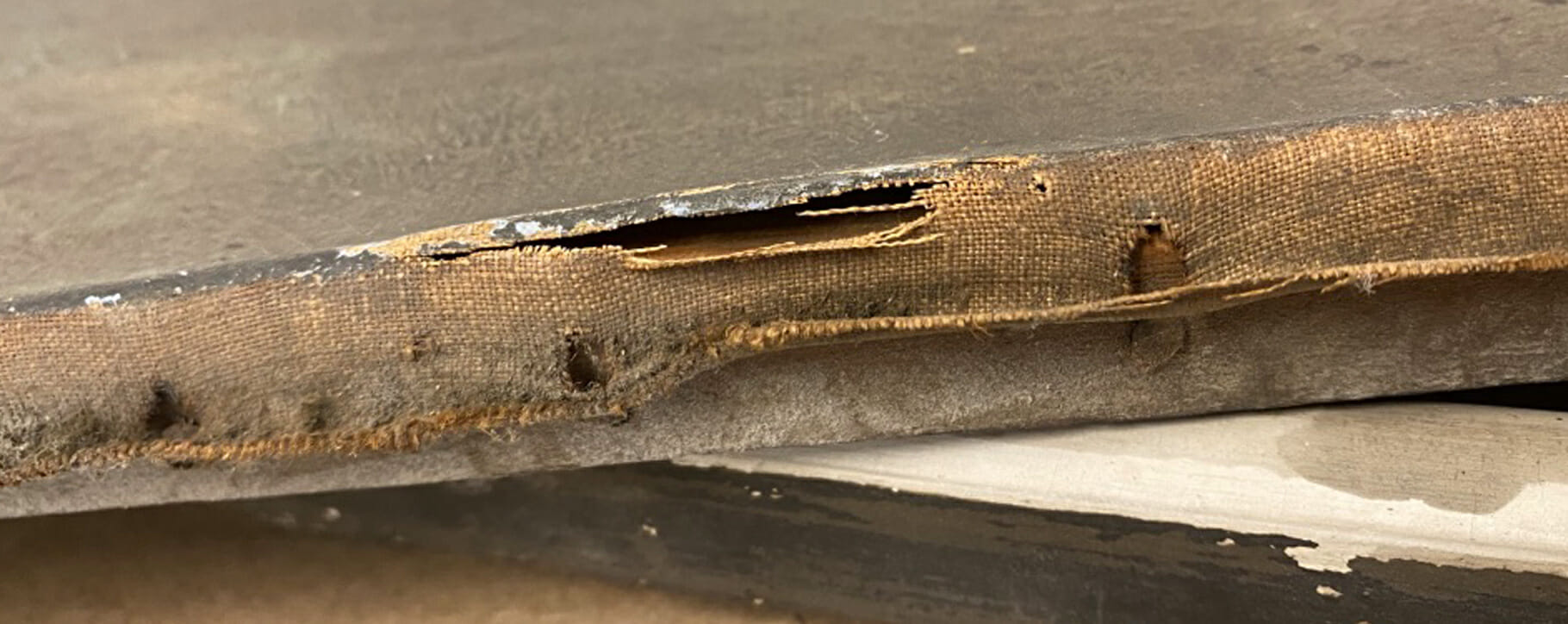 Above: the side of an old oil painting canvas which requires conservation from our team of experts
Above: the side of an old oil painting canvas which requires conservation from our team of experts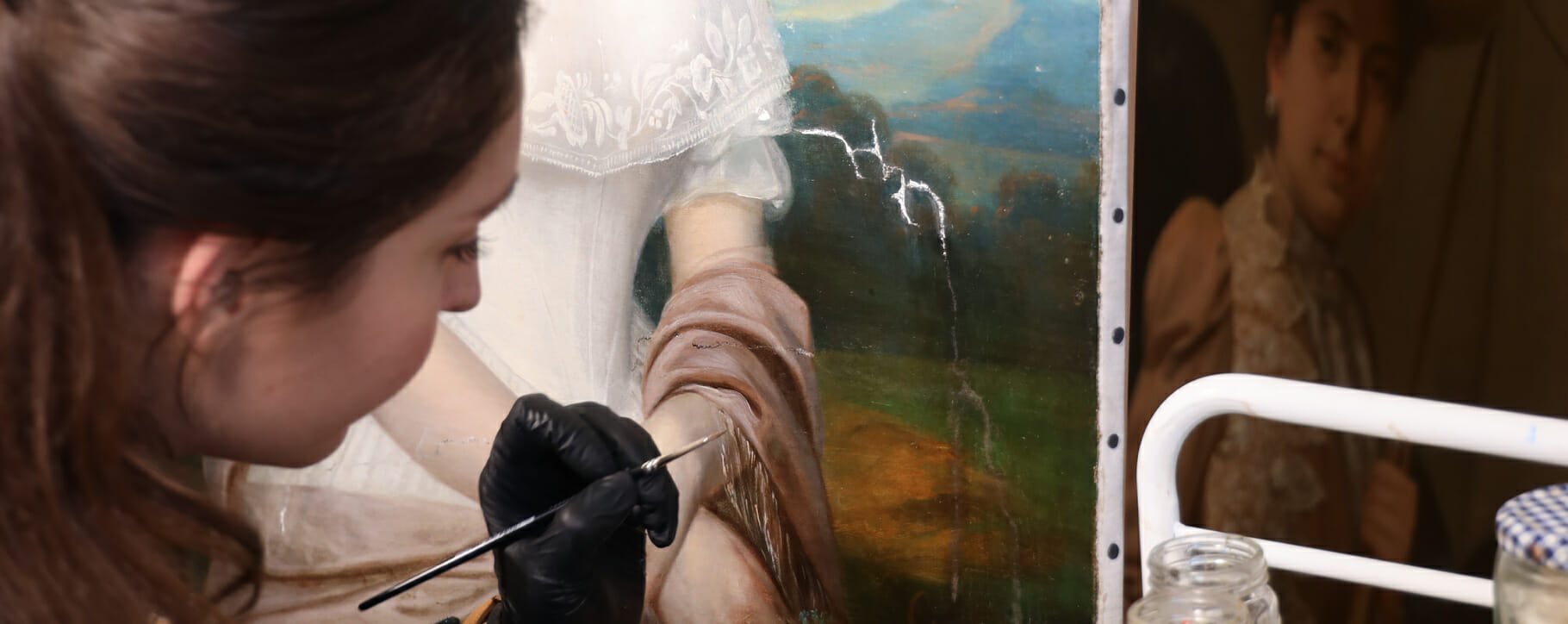 Above: our conservator retouching a 19th century portrait with sympathetically applied conservation-grade pigments
Above: our conservator retouching a 19th century portrait with sympathetically applied conservation-grade pigments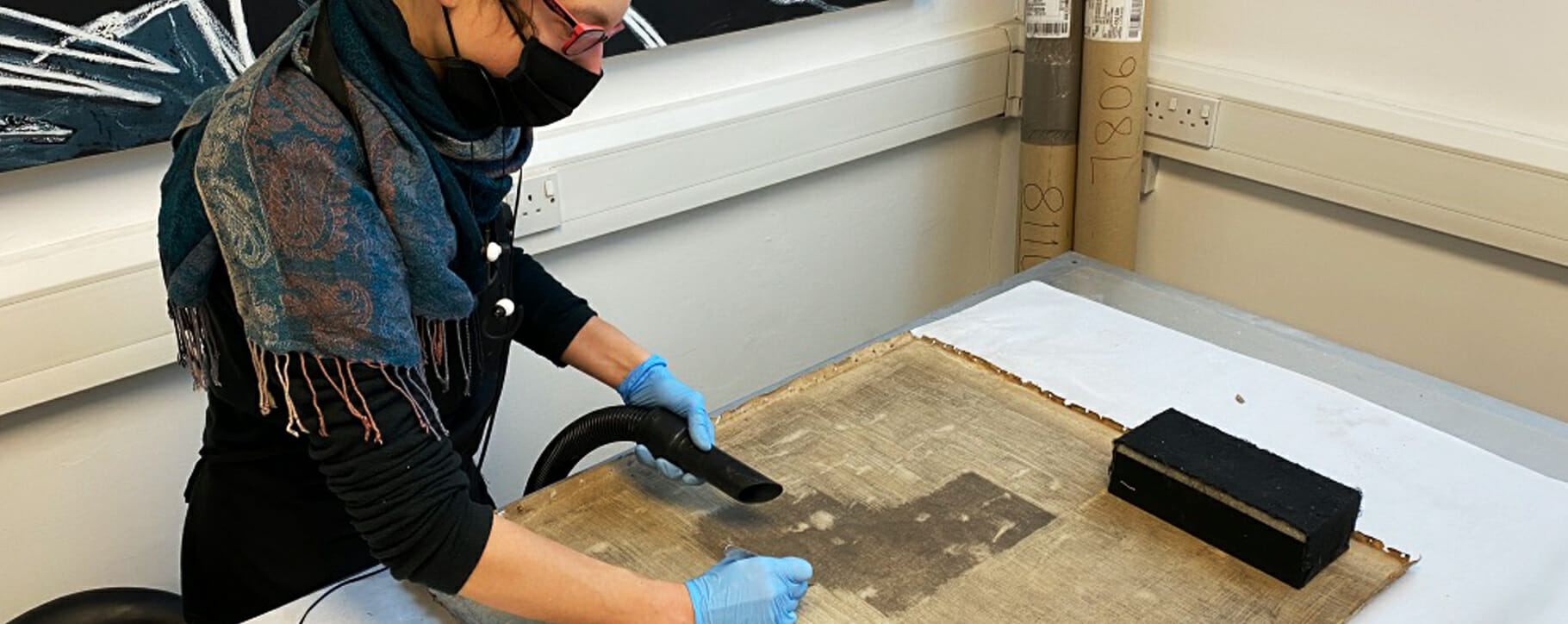 Above: our conservator cleaning the back of an old oil painting canvas, removing contamination and toxic particles
Above: our conservator cleaning the back of an old oil painting canvas, removing contamination and toxic particles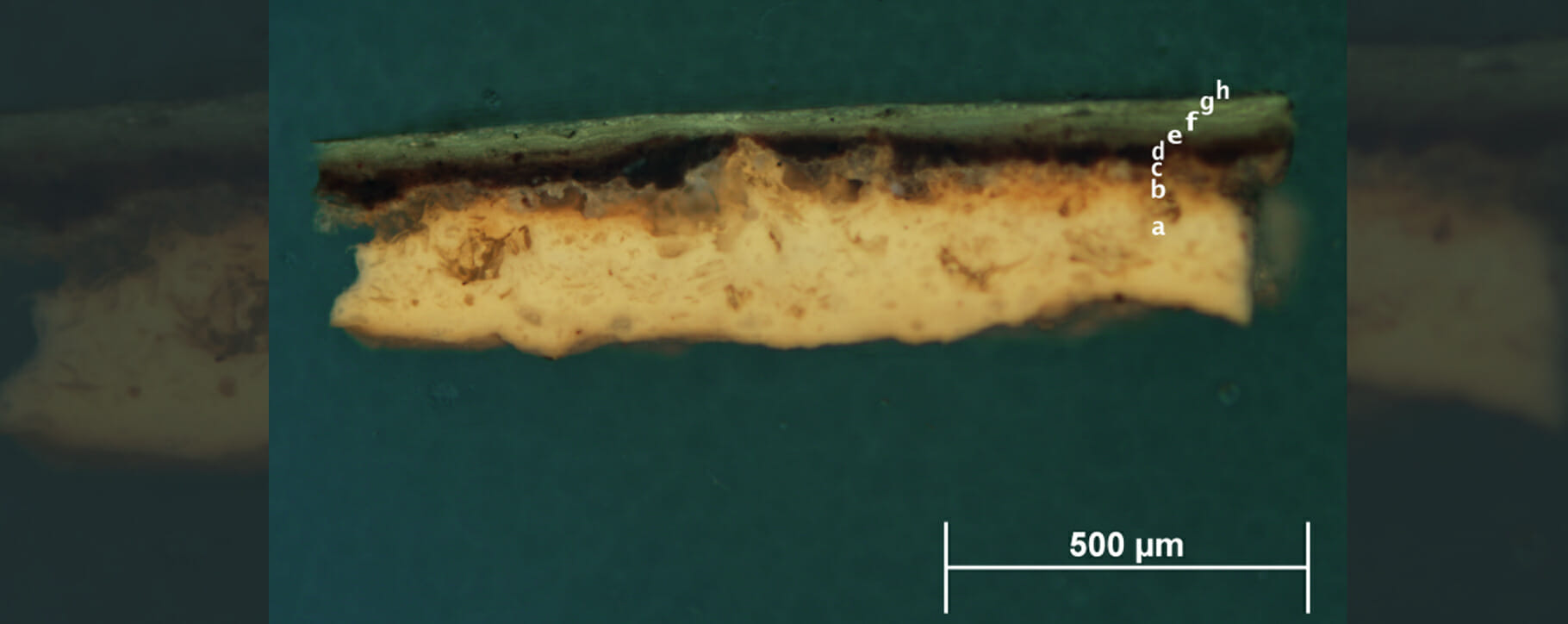 Above: cross section in normal light levels
Above: cross section in normal light levels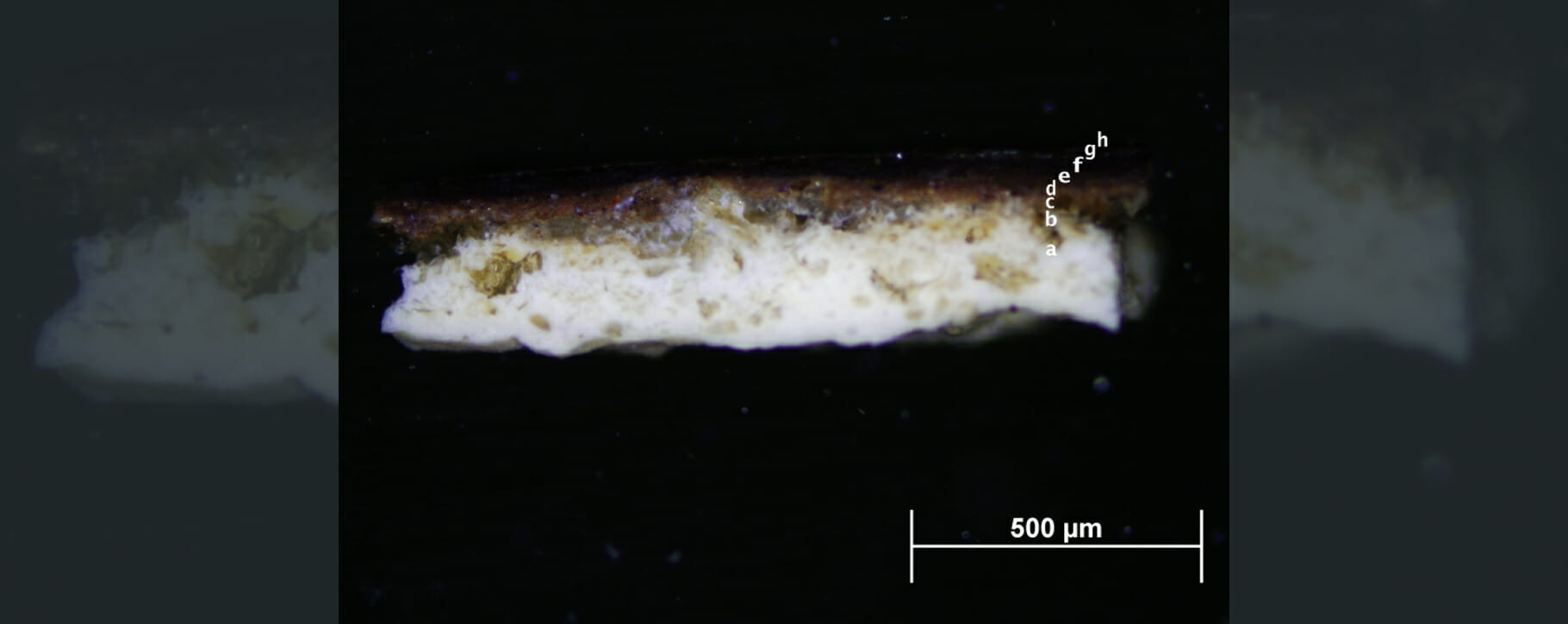 Above: cross section in UV light
Above: cross section in UV light Above: an example of a cross section from an oil painting
Above: an example of a cross section from an oil painting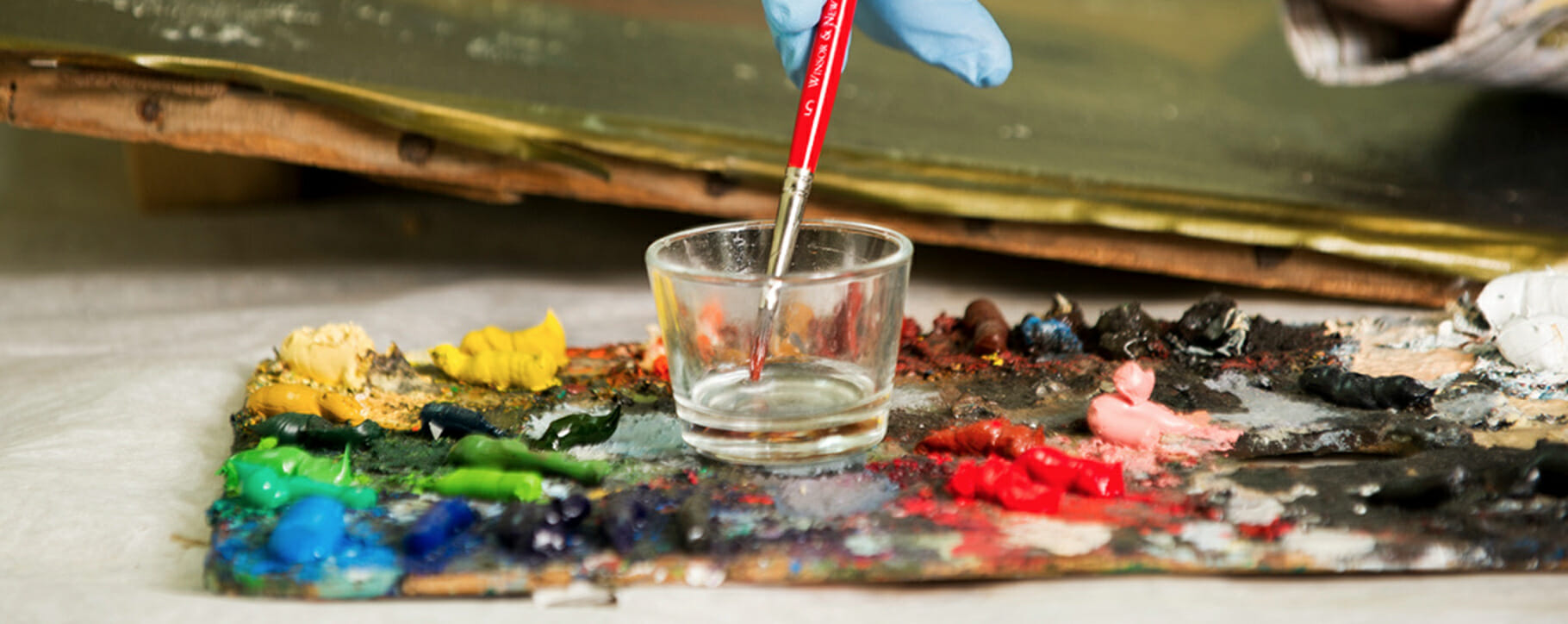 Above: a close up of the various pigments which may be applied to an oil painting
Above: a close up of the various pigments which may be applied to an oil painting




